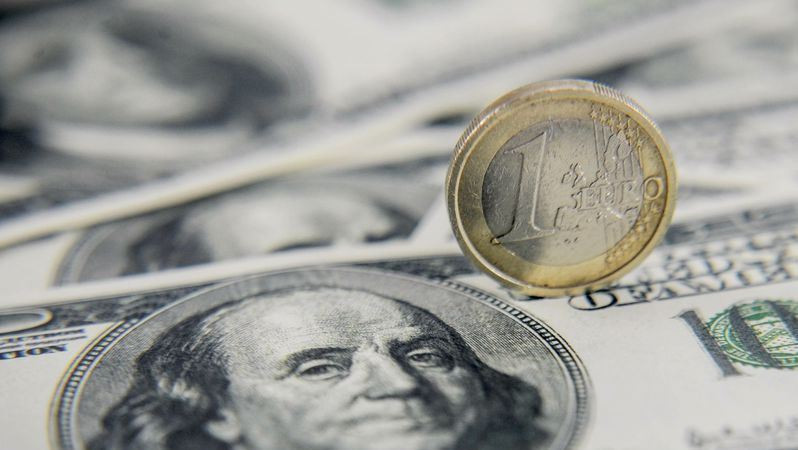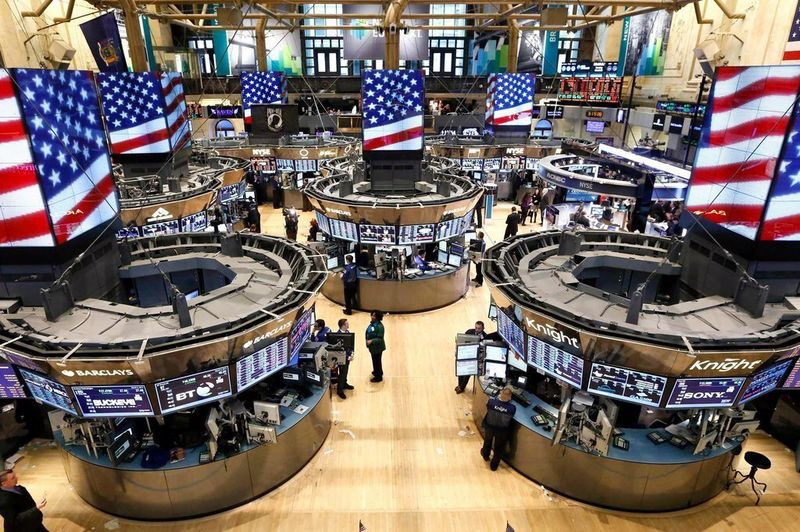

Published ahead of March data on the consumer price index in the United States allowed some experts from Wall Street to say that the peak of inflation is close.
The base CPI, which does not take into account the cost of food and energy, expanded by 0.3% on a monthly basis in March after an increase of 0.5% in February.
The slowdown in the growth of the indicator supports the idea that the Federal Reserve may not have to be so aggressive in terms of tightening policy later this year.
Armed with this idea, key US stock indexes rose by 1% during yesterday's session.
A fairly moderate increase in core inflation provoked an improvement in risk sentiment and caused a rollback of the protective greenback from the previously reached peak values since May 2020.
At the moment, USD retreated across the entire spectrum of the market, but only to update two-year highs beyond the 100 level.
The dollar recovered later on Tuesday after somewhat softer than expected US inflation data allowed traders to win back some of the excessively extreme positioning on the US currency.
Signs that inflation in the United States is not moving along such a destructive trajectory provided only local support to the stock market. The main US stock indexes ended trading in the red. In particular, the S&P 500 declined by 0.34% to 4,397.45 points.
Apparently, investors realize that even in the case of more mundane expectations, implying six rounds of raising the Fed's key rate by 25 basis points before the end of the year, along with active asset sales from the central bank's balance sheet, this is a combination that poorly combines with a strong stock market.
In addition, there is a possibility that the rapid price growth in the country will continue. The acceleration of inflation may have a strong impact on the fragile stock market, which this year has already suffered from investor concerns about the situation in Ukraine and the central bank's policy.

The inflation shock will be followed by a rate shock that will eventually lead to a recession shock, Bank of America strategists say, who predict that the S&P 500 index will fall by 11% from current levels.
"The last dominoes that will fall out in terms of recession expectations will be rising bond yields and a weakening dollar," BofA said.
Commerzbank analysts agree with them, who claim that the greenback will fight for further strengthening.
"It is quite possible that even more aggressive expectations on rates will not support the dollar, and may even damage it due to the risk of recession," they said.
Inflation in the US began to accelerate last spring, and at first Fed officials insisted that all this was a temporary shock from the pandemic, as government aid payments and the use of vaccines caused a surge in demand that hit the intricate global supply chains. Since then, the price increase has spread to both services and goods.
In response, the US central bank began what may turn out to be one of the fastest steps to normalize monetary policy in the modern history of the Fed. If the statistics force the central bank to become even more aggressive, the risks of error and, accordingly, recession will increase.
Macro statistics coming from the United States will now be evaluated even more carefully by investors, although there is practically no doubt about raising the federal funds rate by 0.5% in May. Since such a development of events has already been taken into account by almost 90% in quotes, any bearish signal the dollar is likely to win back quite sensitively, especially in overbought conditions.
Representatives of the US central bank disagreed on whether high inflation will become a recurring problem in the future, requiring repeated rate hikes, which is in sharp contrast to their broad consensus on the current policy course.
How this debate develops could change the course of Fed policy for years to come.
So, the deputy chairman of the US central bank, Lael Brainard, said that reducing inflation to the Fed's target level of 2% is the most important task of the central bank, but she is confident that a series of interest rate hikes and a reduction in huge stocks of bonds will allow the central bank to achieve this.
According to Brainard, certain hopes are inspired by the fact that core inflation, which excludes energy and food, is beginning to decline, even though the overall price increase has reached its highest level since 1981.
She said she expects demand and inflation to decline in the coming months as the Fed will promptly raise interest rates.
As soon as the American economy overcomes the price pressure caused by the restriction of supplies due to the pandemic and the conflict in Ukraine, there are good reasons to believe that the economic picture will approach pre-pandemic norms, Brainard added.
Thomas Barkin, President of the Federal Reserve Bank of Richmond, believes that upward price pressure may persist if firms reformat supply chains, making them not only more resistant to potential failures, but also more expensive, and the government spends money on benefits for an aging population or on defense.
"If bouts of high inflation become more frequent in the future than it was before the pandemic, our efforts to stabilize inflation expectations may require periods when we tighten monetary policy more than it has been recently," the head of the Richmond Fed said.
However, at the moment, according to Barkin, the Fed's task is extremely clear: to quickly raise interest rates to a neutral level, which, according to estimates, is about 2.4%.
"The best short–term way for us is to move quickly to a neutral range, and then check whether the inflationary pressures of the pandemic era are weakening and how stable inflation has become. If necessary, we can move on," he said.
Meanwhile, the president of the St. Louis Fed, James Bullard, said that a neutral policy that can only contain the upward pressure on prices is not enough to influence inflation. Moreover, he stressed that the latest CPI data serve as a call for more decisive action by the US central bank.
Although the data released on Tuesday showed some signs of a slowdown in underlying inflationary pressures in the US, they could do little to calm market concerns about a faster tightening of Fed policy or cause any meaningful dollar selling.
The US currency lost its appeal after the release of inflation data, but managed to recover thanks to the hawkish comments of the Fed representatives.
Touching the local low around 99.80, the USD index rose by 0.26% and ended yesterday's trading near 100.30.
While the dollar overcame the psychologically important milestone of 100, the EUR/USD pair continued its movement to the key level of 1.0800.
Taking advantage of the minute weakness of the greenback, the main currency pair jumped to the level of 1.0900. However, it then turned downwards, as the comments of the FOMC representatives showed that, despite the decline in some inflation indicators, there is no alternative to the future tightening of the Fed's policy. As a result, the dollar was able to regain its strength, and the single currency declined by 0.51% to $1.0828.
Additional pressure on the euro was exerted by the fact that Russian President Vladimir Putin on Tuesday called negotiations on ending the conflict in Ukraine a "dead end situation."
In addition, German lawmakers called for an embargo on Russian oil as soon as possible, which, if it is imposed, will negatively affect the prospects for economic growth in the region.
On Wednesday, the USD index continued to rally, reaching new peaks around 100.50 – the area it last visited in May 2020. The next significant obstacle is at 100.85. If the bullish momentum continues, then the April 2020 peak at 100.95 may come into play.
Meanwhile, the EUR/USD pair is trading erratically in the lower part of the 1.0800-1.0900 range.
The current price dynamics promises the pair additional losses on the short-term horizon, and the path of least resistance for it is still a decline.
"The EUR/USD pair is caught between concerns about the conflict in Ukraine, which are putting pressure on the euro, and concerns about the recession in the United States, which may put downward pressure on the dollar," Commerzbank analysts noted.
"As concerns about the escalation of the conflict in Ukraine prevail again, which are more real and closer in time for the market, the euro is again under great pressure. If signs that a new stage of escalation of the conflict between Kiev and Moscow really intensifies, it is quite possible that EUR/USD will fall below 1.0800," they added.
The dollar will continue to show good results compared to low-yielding currencies such as the euro, Societe Generale strategists believe.
"Unlike German bond yields, the euro does not show a jump ahead of the ECB's decision," they said, referring to the next ECB meeting on Thursday.
The EUR/USD pair will slide to 1.0800 tomorrow if it does not receive support from the European Central Bank, Scotiabank believes.
"Keeping the ECB's previous statements of intent unchanged will risk further weakening for the euro in the coming days, especially ahead of the second round of the French presidential election on April 24," the bank's economists noted.
"Early polls show Emmanuel Macron defeating Marine Le Pen (54% – 46% according to Opinionway and 52.5% – 47.5% according to Ifop), but the momentum may change quickly before the vote; especially after the televised debate on the 20th," Scotiabank said.
The elections in France and the events in Ukraine have enough potential to cause a decisive step of the euro down from the psychologically important line – $1.08.
A confident breakdown of this mark will not only open the way to the lows of the pandemic at $1.06, but may become only the first chord in the long-term decline of the single currency in the direction of $0.85.
We may witness the imminent capitulation of fans of the single currency and see the EUR/USD pair below parity in the next six months if, contrary to market expectations, the ECB does not give any hawkish signals at the upcoming meeting.
If the central bank demonstrates its readiness to raise the key rate in the coming months tomorrow, this will trigger a reassessment of investors' expectations regarding the euro.
The political detente in the coming weeks is also able to reverse the attitude towards the single currency, making purchases of euros from current levels attractive for the long term.